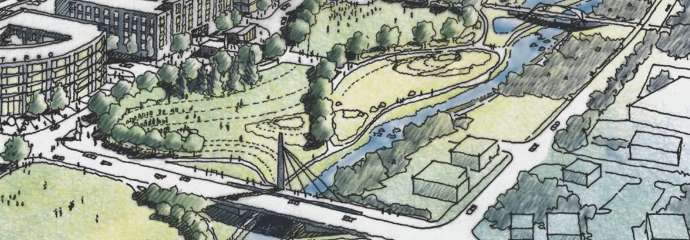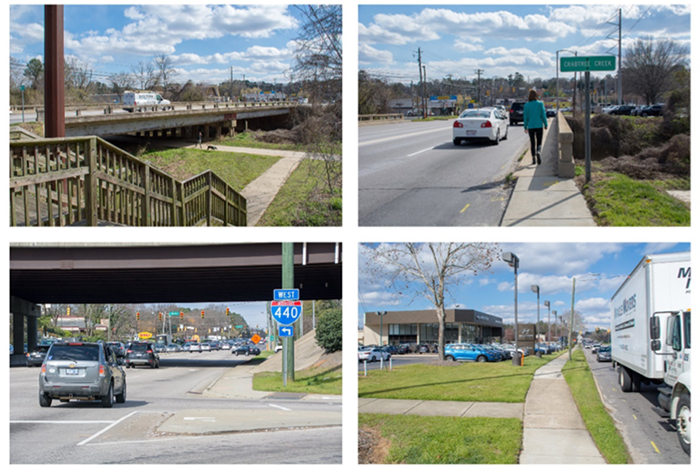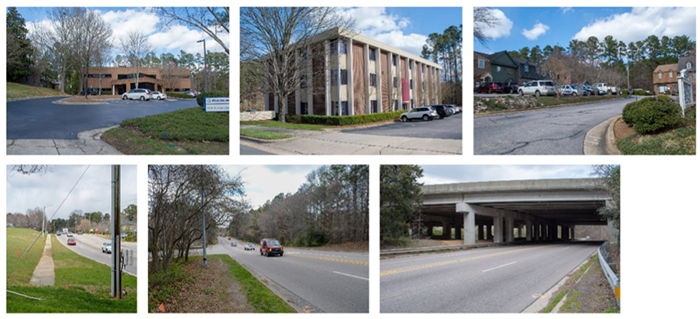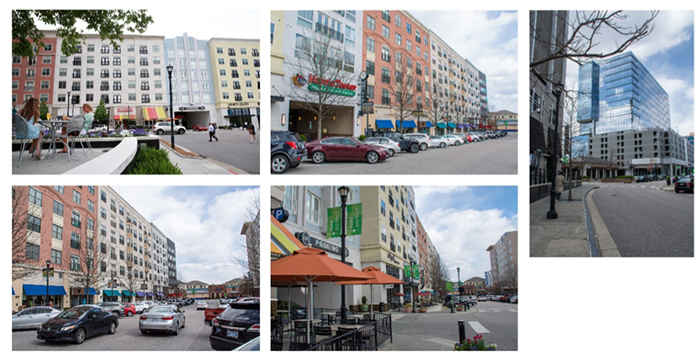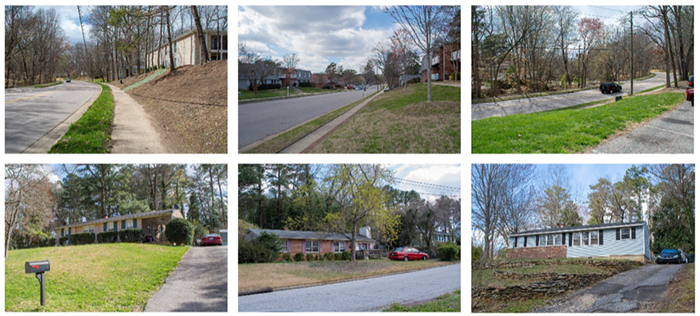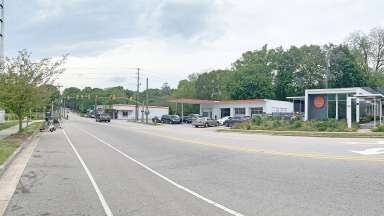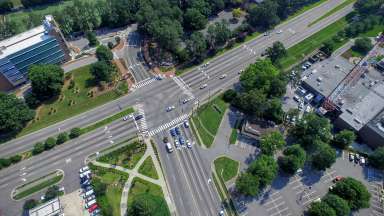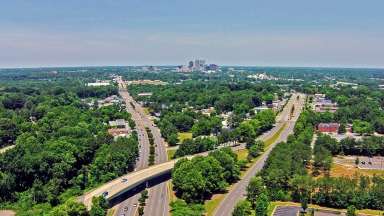The Walkable Midtown plan calls for a set of projects that will create a more walkable Midtown – one that doesn’t require a car to go everywhere - and address other infrastructure needs. Key projects include:
- Two new bridges across the Beltline – one both for cars and for a new greenway connection, the other a pedestrian bridge for people walking and biking.
- A waterfront park along the Crabtree Creek forms the heart of a new urban district.
- “Green streets” that add trees and plants to streets to absorb stormwater, slow cars, and create protected places for people walking and biking.
- A “Midtown Ring” of fully protected spaces for people walking and biking that connects all major destinations in Midtown with nearby neighborhoods.
- Land-use policies provide more job and housing opportunities while ensuring a built form that creates a sense of place and supports walkability.
Read more details about the projects in the full report. See the new Midtown section in the city’s Comprehensive Plan.
Project Details
- Type:
-
Area Plans
- Project Lead:
-
Hannah Reckhow
